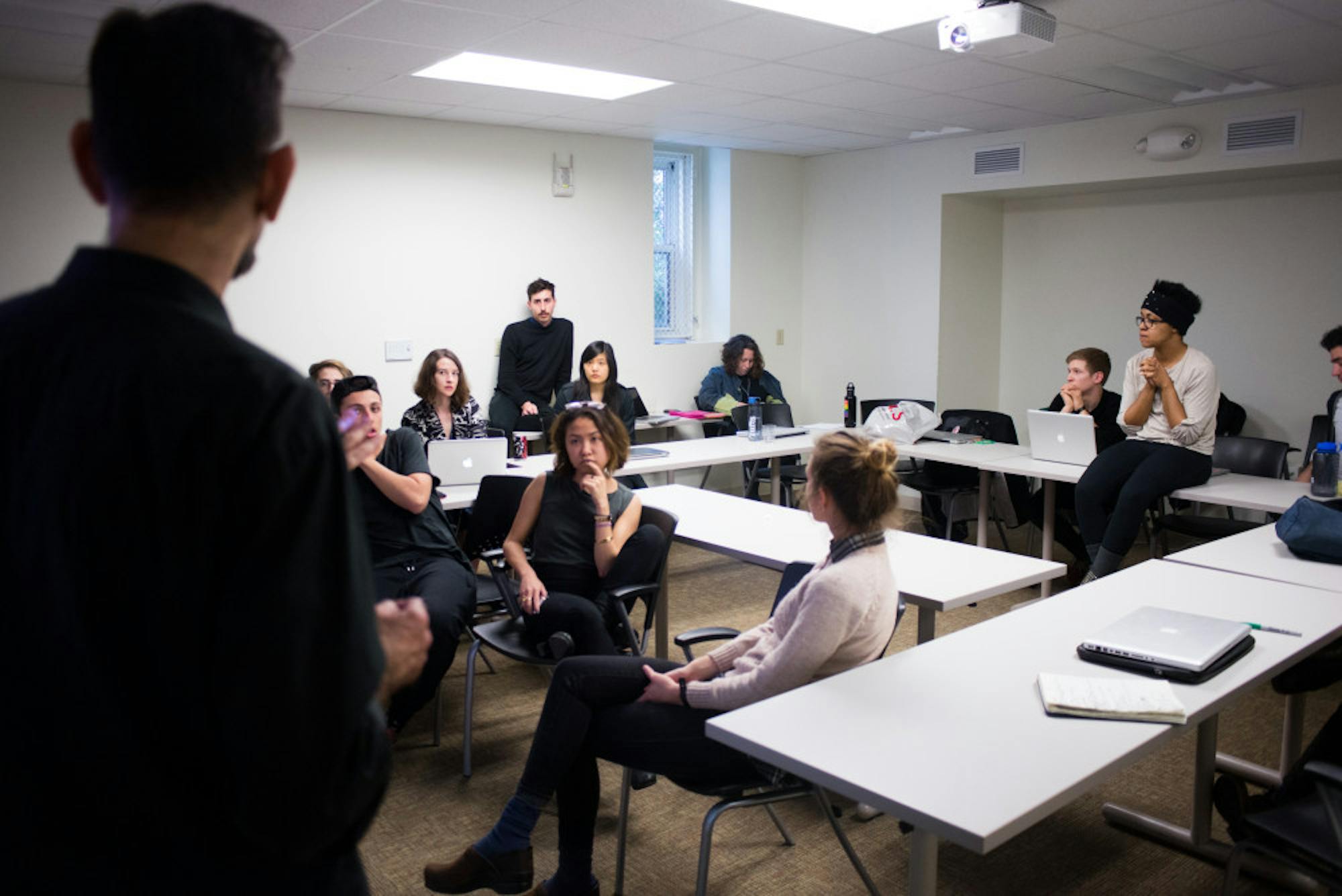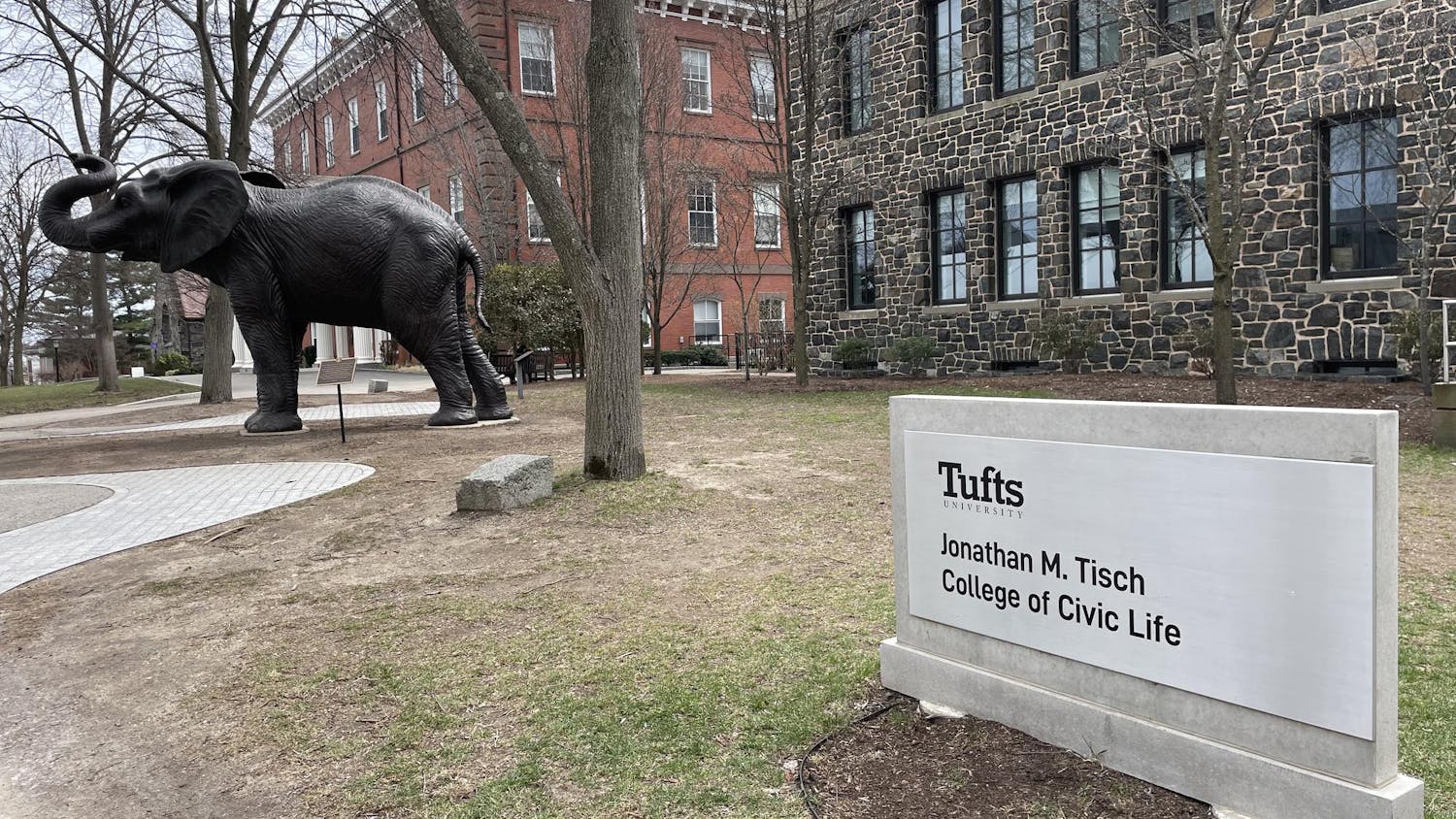Last Thursday and Friday, artist and activist Avram Finkelstein led students in creating a public work to make a statement on racism and race privilege in the United States. The event, which Finkelstein termed a "flash collective," was a collaboration between the Tufts Art Gallery and the Jonathan M. Tisch College of Citizenship and Public Service. It was funded through a grant from the Massachusetts Cultural Council (MCC).
The Tufts flash collective formed in order to create a student-driven, public work to be displayed as a billboard near the Mayer Campus Center Lower Patio. According to Amy Ingrid Schlegel, director of galleries and collections at the Tufts University Art Gallery, the Office of the Provost's recent forum on race, inequality and action combined with Tufts student activism in the Black Lives Matter movement provided an appropriate background to center the work around race and privilege on campus.
"A [flash collective] is an organism. You have to trust in it," Finkelstein said of the eight-hour workshop, in which 13 Tufts and dual-degree students participated. "From every part of our lives, we're told what we can't do," Finkelstein explained. "We can't communicate complex ideas. We can't get people to care about things. The flash collective is an exercise in permission."
Finkelsteincreated the concept of a flash collective in response to the HIV/AIDS crisis during the 1980s.After his significant other passed away from AIDS in 1984, six of his friends and colleagues, including himself, created the "Silence=Death" campaign, which calls for outspoken action against homophobia.
Finkelstein explained that this work of "cultural production" became a "rallying cry for AIDS activism and activism around LGBT issues." After years of speaking about this work, though, Finkelstein decided to engage communities differently, by teaching the skills to actually produce the work. He has since led more than a dozen flash collectives at many institutions across the country.
Senior Director of Tisch Programs Mindy Nierenberg explained that Tisch College wanted to be involved with the project, given its connections to current social issues. "I think the Tufts art galleries do a great job bringing artists and art to campus that have a connection with civic engagement or social issues," she said.
When Schlegel reached out to discuss the two organizations working together, Nierenberg proposed incorporating the Provost's forum and centering the piece around the Black Lives Matter movement.
"People need a way to talk about this -- a way to express themselves. I don't think people ordinarily think of art as a way of doing that," Nierenberg said. "I think that especially on a campus like Tufts, people are very much in their heads, and that the way that people articulate ideas is through words as opposed to images." Art, according to Nierenberg, is a valuable way to make a statement and inspire change.
After a brief and unsuccessful local search, Schegel's office connected with Finkelstein and began planning the collective. After a two-hour reception on Thursday, the students gathered in the basement of Eaton Hall and began to work. After an eight-hour day on Friday, the flash collective finished at 5:00 p.m., 30 minutes ahead of schedule.
"It was amazing," Finkelstein said after the event. "I think the level of thoughtfulness and consideration, and the complexity of the issues which were brought up, was more comprehensive than many other flash collectives I've worked on."
Finkelstein described trust as the "main breakthrough" in collectives, yet with this Tufts group, this was not an "obstacle."
"I felt there was a tremendous amount of collegiality -- a sense of trust and safety ... It felt like a collective who had been working together a long time."
"I think every art student wants to make work collaboratively," Clayton Woolery, a sophomore dual degree student who was part of the 13-student collective, said following the event. "It met my expectations, and maybe exceeded them, because we will continue to be in dialogue after the day is over."
The final design, which still needs to go through a production phase, is scheduled to be installed by the end of April, followed by an unveiling event after the end of classes, according to Schlegel. Nierenberg added that she hopes the final installation will generate discussions among students of the issues it presents.
"I hope that the community goes and sees it," Nierenberg said. "I hope that people look at the images and that it makes them think, because that's the whole spirit of it: to promote dialogue with each other about issues which are difficult to talk about."
Correction: An original version of this article misattributed a description of Finkelstein's "Silence=Death" work to the project's own website when it was, in fact, an excerpt from the Encyclopedia of AIDS published on the ACT UP NY website. The "Silence=Death" project does not maintain an official website.
Finkelstein's 'flash collective' centers dialogue on race privilege

Avram Finkelstein and members of the Tufts Flash Collective, a collective art project, decide on the final logistics for their public art piece on March 27.





